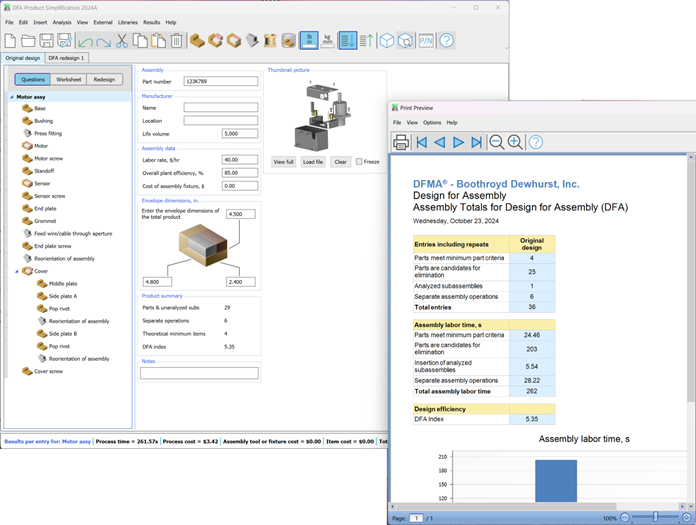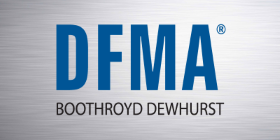DFMA: Product Simplification
DFMA: Product Simplification (Design for Assembly)
Simplify products, cut assembly time, and improve reliability. DFMA: Product Simplification uses an intuitive question-and-answer workflow to identify parts that can be consolidated or eliminated while maintaining 100% functionality. Applying industry-tested minimum-part criteria, the software highlights opportunities to reduce fasteners, simplify handling/orientation, and streamline fastening—resulting in a more elegant product that is easier and less costly to assemble.

Why Teams Choose DFMA: Product Simplification
Estimate Assembly Difficulty—Objectively
Rate each part by how it’s grasped, oriented, moved, inserted, and fastened. Designs that assemble easily tend to cost less; DFMA quantifies those penalties so you can remove them by design.
Support Faster, Consensus-Driven Decisions
Bring design, manufacturing, service, and sourcing into a single, objective discussion. DFMA provides a shared scorecard and concrete suggestions that move reviews from debate to decision.
Benchmark with the DFA Index
Use the DFA Index to compare design alternatives internally—or against competing products—independent of product size or complexity. Track improvements as the design evolves.
Raise Quality and Reliability
Fewer parts and simpler interfaces mean fewer failure modes. Teams sharpen skills around theoretical minimum part count and eliminate unnecessary complexity early.
Integrate with DFMA: Should Costing for Total Cost
Pair Product Simplification with DFMA: Should Costing to evaluate process alternatives and piece-part costs. Together, they provide an early, defensible cost profile for planning and supplier collaboration.
How It Works
- Structure the product: Capture the current assembly and key functions.
- Answer targeted questions: Identify parts that exist only for handling, fastening, or compliance.
- Quantify efficiency: Calculate handling/fastening penalties and the DFA Index.
- Redesign with guidance: Use suggestions for consolidation and simplification.
- Validate with DFMA: Should Costing: Compare cost implications of the shortlisted concepts.
What Success Looks Like
- Parts reduced (e.g., fasteners eliminated, brackets integrated)
- Total assembly time down with fewer handling and orientation steps
- Suppliers reduced and BOM simplified
- Higher DFA Index across iterations, documented for design reviews




